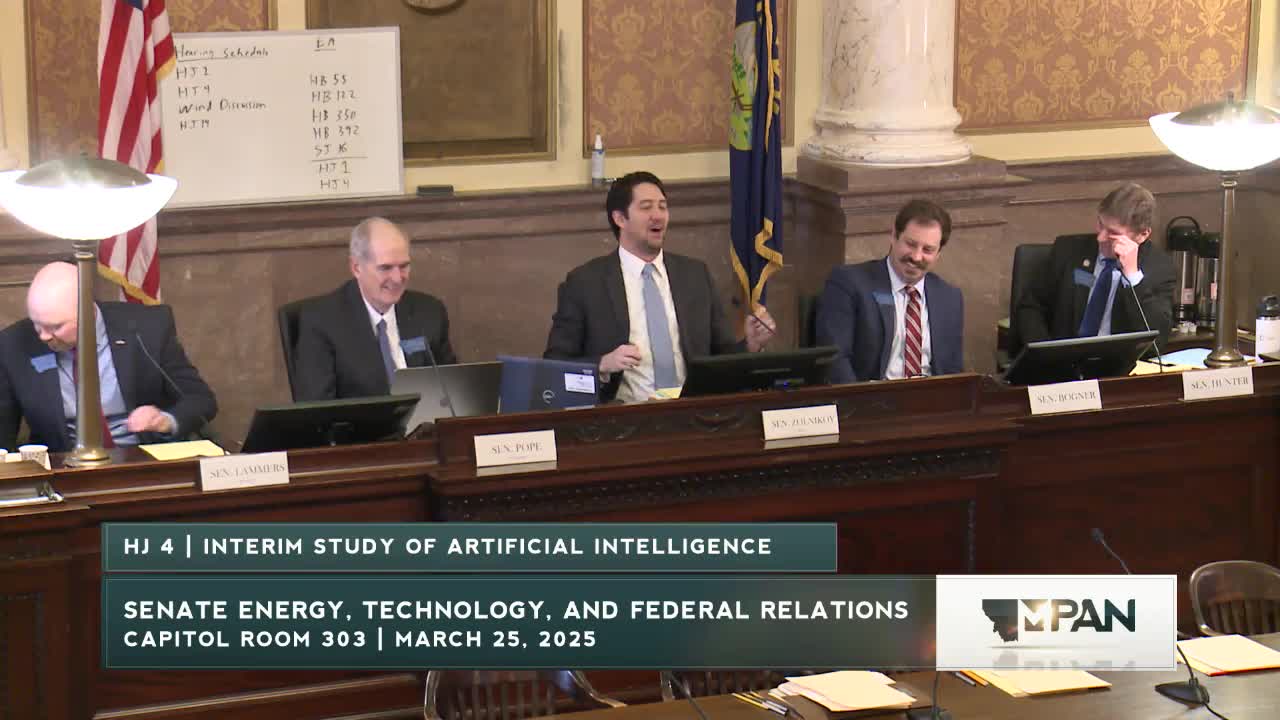NextEra Energy discusses Clearwater Wind Energy Center successes in Montana legislative meeting
March 25, 2025 | 2025 Legislature MT, Montana
Thanks to Scribe from Workplace AI , all articles about Montana are free for you to enjoy throughout 2025!

This article was created by AI using a video recording of the meeting. It summarizes the key points discussed, but for full details and context, please refer to the video of the full meeting. Link to Full Meeting
Ryan Fitzpatrick, executive director of NextEra Energy Resources, presented a comprehensive overview of the Clearwater Wind Energy Center, which has been operational since 2022. Located in Rosebud, Custer, and Garfield Counties, this project represents a significant investment of $1.3 billion and has created over 300 construction jobs, exceeding initial projections. Fitzpatrick highlighted the project's positive impact on local infrastructure and economy, including contributions to property taxes expected to reach $200 million over its lifespan.

Before you scroll further...
Get access to the words and decisions of your elected officials for free!
Subscribe for FreeThe committee members engaged in a thorough dialogue about the environmental considerations of wind energy. Questions arose regarding the potential impact on wildlife, particularly birds, and the measures taken to mitigate these effects. Fitzpatrick assured the committee that extensive environmental surveys were conducted prior to construction, and ongoing monitoring is in place to safeguard local ecosystems.
As the conversation shifted to the proposed Glendive Wind Project, which is projected to cost $1.85 billion, committee members expressed interest in its timeline and expected outcomes. Fitzpatrick indicated that construction could begin in 2026, with operations anticipated by 2028 or 2029. The project aims to install 210 turbines across five counties, further expanding Montana's renewable energy footprint.
A key point of discussion was the transmission of energy generated by these projects. While the Clearwater project supplies power to utilities in Washington and Oregon, concerns were raised about the lack of local energy retention. Fitzpatrick clarified that none of the energy produced remains in Montana, a fact that sparked further inquiry into the economic benefits for local residents.
The meeting underscored the delicate balance between advancing renewable energy initiatives and addressing community and environmental concerns. As Montana continues to explore its wind energy potential, the outcomes of these discussions will likely shape the state's energy landscape for years to come. The commitment to local hiring and environmental stewardship was emphasized, reflecting a growing awareness of the need for sustainable development practices in the face of expanding energy demands.
Converted from Senate Energy and Telecommunications - Mar 25, 2025 14:30 - 19:30 meeting on March 25, 2025
Link to Full Meeting
Comments
View full meeting
This article is based on a recent meeting—watch the full video and explore the complete transcript for deeper insights into the discussion.
View full meeting




